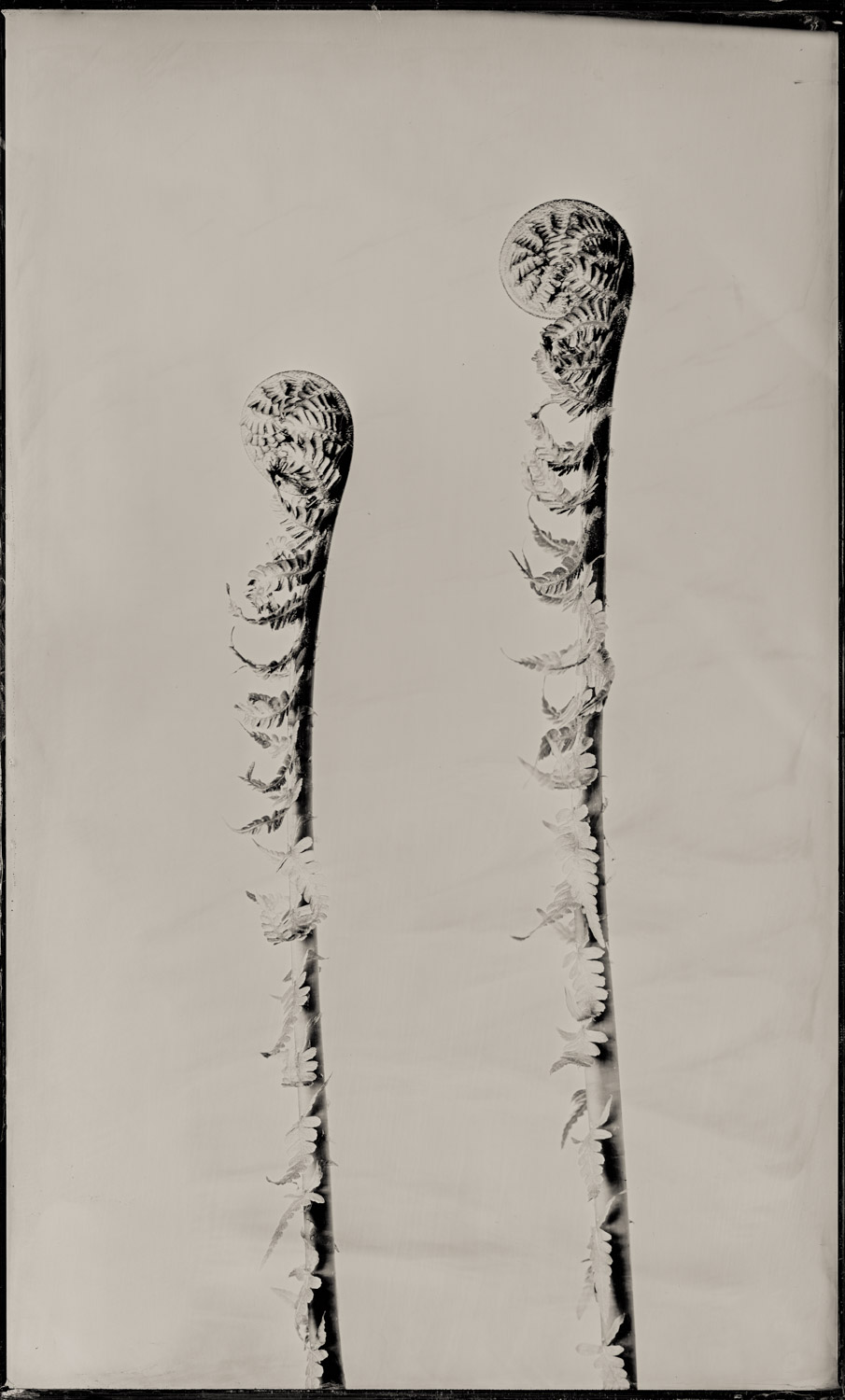Schönheit. Ganz nah und doch verborgen. Weil wir sie oft übersehen. Die Pflanzen, die Christian Klant porträtiert, mögen exotisch wirken; das verdanken sie ihrer Skulpturenhaftigkeit, der Hyperdetailtreue, dem technischen Verfahren mit Kollodium Nassplatten. Aber sie wachsen nicht in fernen Weltgegenden. Sie umgeben uns. Am Wegesrand, im Garten, im Stadtpark. Ihre Anmut ist zugänglich demjenigen, der sich ihr öffnet, und derjenigen, die hinschaut. Wer den ornamentalen Reichtum der Pflanzenwelt genießt, verspürt ganz natürlich den Impuls, ihn zu bewahren. Wir schützen, was wir schätzen.
Vordergründig erinnern die Pflanzenporträts an die Fotografien von Karl Blossfeldt (1865-1932). Dessen Arbeiten, entstanden vor mehr als 100 Jahren, waren Mittel zum Zweck: Vorlagen für den Zeichenunterricht von Studenten. Später galten sie als stilgebend, prägten die „neue Sachlichkeit“. Klant dagegen komponiert seine Pflanzenporträts auf poetische Weise. Er will einladen, inspirieren, sensibilisieren. Ihm geht es um Bewusstseinsweckung, dass Natur in ihrer lebendigen Stille für uns ein Kraftquell sein kann. Gerade heute, in einer Phase der sich selbst beschleunigenden Beschleunigung. Deshalb auch eine Riesenkamera, mit der man nur langsam arbeiten kann, deshalb die 30 mal 50 Zentimeter großen Platten, deren Belichtung stundenlange Vorbereitung erfordert. So entstehen lange Blicke auf eine Schönheit, die in Gestalt einer Pflanze vergänglich, aber als Idee ewig ist.
Habe ich die Geduld mußevollen Schauens, nach außen wie nach innen? Lasse ich mich selbst „in Ruhe“? Kann ich Schönheit auch in mir wahrnehmen? Klants Bilder stellen Fragen an die Betrachter. Die Antworten werden unterschiedlich ausfallen – so vielfältig wie die Formen, Farben und Facetten im Reich der Pflanzen. // Michael Gleich
Beauty. Close and yet hidden. Because we often overlook it. The plants portrayed by Christian Klant may seem exotic; they owe this to their sculptural quality, their hyper-detailed fidelity, achieved with the wet plate collodion process. But they do not grow in distant parts of the world. They surround us. On the wayside, in the garden, in the city park. Their grace is accessible to those who open themselves to them, who take a closer look. Those who enjoy the ornamental richness of the plant world naturally feel the impulse to preserve it. We protect what we value.
On the surface, the plant portraits are reminiscent of the photographs of Karl Blossfeldt (1865-1932). His works, created more than 100 years ago, were a means to an end: templates for students‘ drawing lessons. Later they were regarded as stylistic, they shaped the „new objectivity“. Klant, on the other hand, composes his plant portraits in a poetic manner. He wants to invite, inspire, sensitize. He is interested in awakening an awareness that nature in its living silence can be a source of strength for us, especially today, in a phase of self-accelerating acceleration. Therefore the giant camera, with which one can only work slowly; therefore 30 x 50 centimeter plates, whose exposure requires hours of preparation. This creates long glances at a beauty that is transient in the form of a plant, but eternal as an idea.
Do I have the patience to look, at the outside as well as the inside? Do I leave myself „in peace“? Can I also perceive beauty in myself? Klants pictures pose questions to the viewer. The answers will be different – as varied as the forms, colors and facets in the realm of plants. // Michael Gleich







